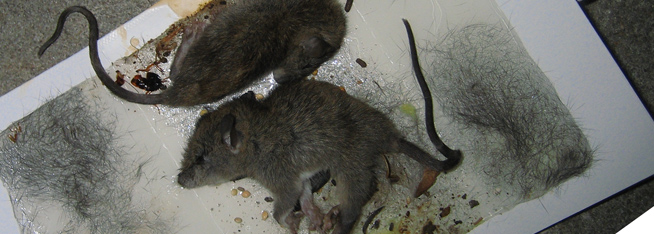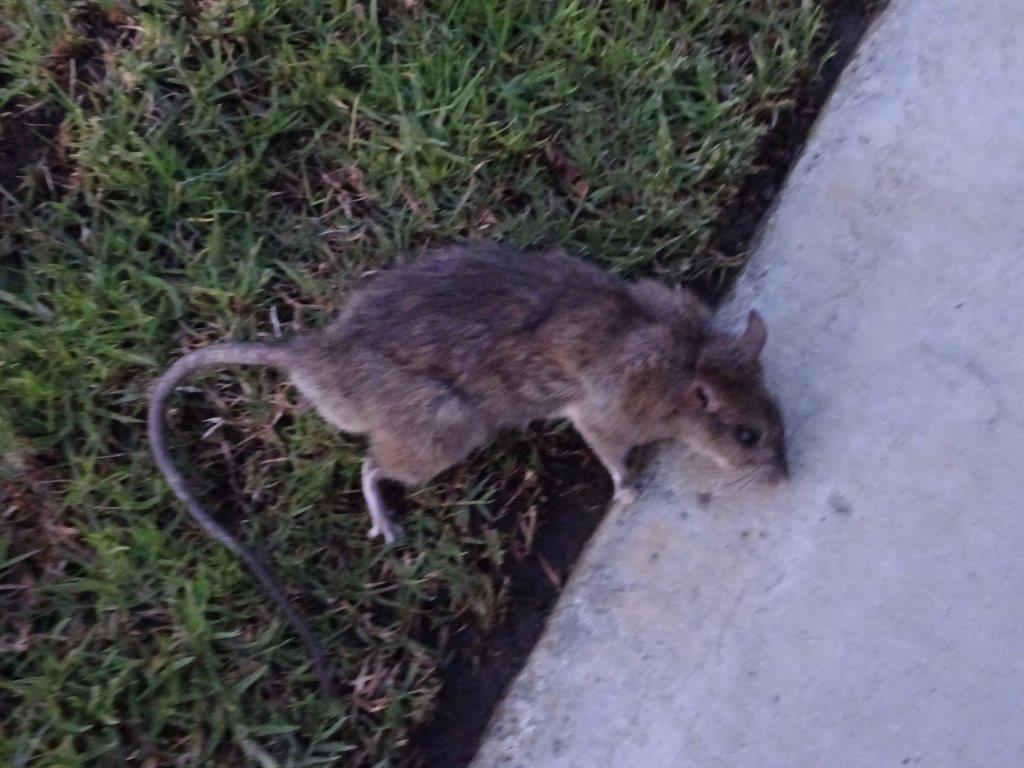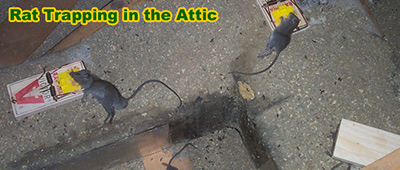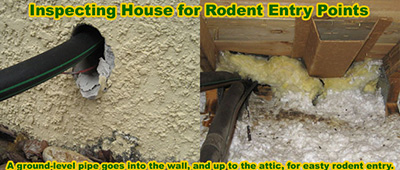Glue traps are a relatively new concept in the world of rat removal, and although they do seem like a really good idea in theory, in practice things are much more brutal than that. These glue traps are generally placed around the edges of the floors - where the floor meets the wall - and the aim of the game is to stop the rat (or mouse) in its traps. Once the animal makes contact with that super-sticky glue, there is no way of them breaking free. They are stuck. That is, until you are ready to release them. And that's the thing - you will need to release them.

That's if you check the glue traps enough, of course. Many homeowners place these traps down and then just forget about them. This essentially sticks the rats to the glue traps, and then leaves them there. They will starve to death. That's if another animal doesn't get to it first, which it can do. Even if you had the most well-trained cat or dog in the world, it would still be inclined to take a closer look at this weird creature that has been capture by a glue strip in the corner. What would happen if your pet were to come into contact with that glue trap? They could get their paws stuck, or their nose … These traps just aren't designed to be used in households where other animals are present. Or kids, for that matter.
If you do happen to catch the trap in time - if the rat hasn't starved to death, or been killed by another rat or animal, you then have the dilemma of what to do with it next. Pulling the animal off the glue trap isn't a good idea. There's a good chance only part of the rat will break free from the glue. It's designed to stick these animals fast and securely, so it's not going to be easy to break them free from it. If you try, you will more than likely injure the animal, once again, securing its death in the great outdoors once you have set it free.
In short, glue traps do seem like a great idea, but they just aren't practical. They certainly aren't humane. You are going to do that rat more harm than good by trying to remove it from its sticky tomb, and at the end of it all, you might have just as well put down lethal snap traps. Even that's a much more humane option than the glue traps.
We know that rats aren't pleasant creatures, and we also know that you will want to deal with them as quickly and effectively as possible. That's why you should avoid using glue traps. They don't solve the issue. You will still need to deal with a dead rat. The rat will still end up dead more often than not, regardless of how careful you are when you try to remove the rat, and in many cases, you are left with a half-dead rat that you will then need to kill yourself. It just doesn't sound pleasant, does it?
Go back to the Rats in the Attic home page.

Anyone who has ever had to deal with a rat infestation knows how frustrating it is. Your household items get chewed, you find smelly rat wastes in the corners of your house, and you occasionally get startled when you see them running around. Not to mention the diseases rats can transmit to you, your pets, and your entire family. Indeed, the presence of rats in your property is something that you should definitely do something about. However, while there are many ways to get rid of rats, it is still best to avoid inhumane options such as glue traps.
What are glue traps?
The glue trap is a trapping method where a sticky adhesive is applied onto cardboard or a similar flat surface. It is to be placed in an enticing location where you usually see rats in your house. It is usually used with bait.
You can buy glue traps that are ready for use from your local store or you can also make one at home. While this method is used by millions of people around the world, it is not a recommended way to get rid of rats as it is cruel and inhumane.
#1 Glue traps could cause rats to harm themselves.
Once the rat realizes that it has been trapped, it will do everything and anything in its power to get out of it. There have been numerous cases where the captured rat resorted to chewing off its own limbs in an attempt to escape. However, as you can imagine, this never works and only causes more harm than good. It is a very cruel situation that could easily be avoided if other trapping methods are used.
#2 Glue traps make the captured rat an easy prey for scavengers.
Glue traps are often left unattended for days. The adhesive on the glue trap has toxic chemicals that suffocate the rats and burn their skin. This weakens the poor rat but doesn’t really finish the job of killing the animal - not for a few days. This gives an ample amount of time for scavengers to find the trapped rat and give it a brutal end to its life.
#3 Glue traps = slow and painful death.
If the person who sets the glue trap leaves it and does not check in on it for a few days, what usually happens is that the rat spends the last few days of its life fighting to breathe while experiencing excruciating pain from the skin-burning chemicals on the glue. Meanwhile, the rat would still hopelessly try to move its limbs and escape the adhesive. This will go on and on until the rat finally dies from exhaustion, suffocation, and starvation. It really is a form of torture and this is very inhumane.
For us humans, it is hard to put ourselves in the shoes of other species, especially those that we consider as pests and nuisance animals. However, it is imperative for us to stick to humane ways of dealing with them instead of resorting to cruel options. Trapping can be done as long as it doesn’t permanently incapacitate the animal and the captor releases it to a suitable environment.








